
Bedtime yoga can help enhance sleep quality and manage insomnia through poses that promote relaxation.
This article explores effective yoga poses for a restful slumber and provides insights on their benefits for better sleep.
Embrace these poses to try and breathing exercises to transform your nightly routine, helping you to enjoy deeper sleep.
What is Bedtime Yoga and How Can It Help Improve Sleep?
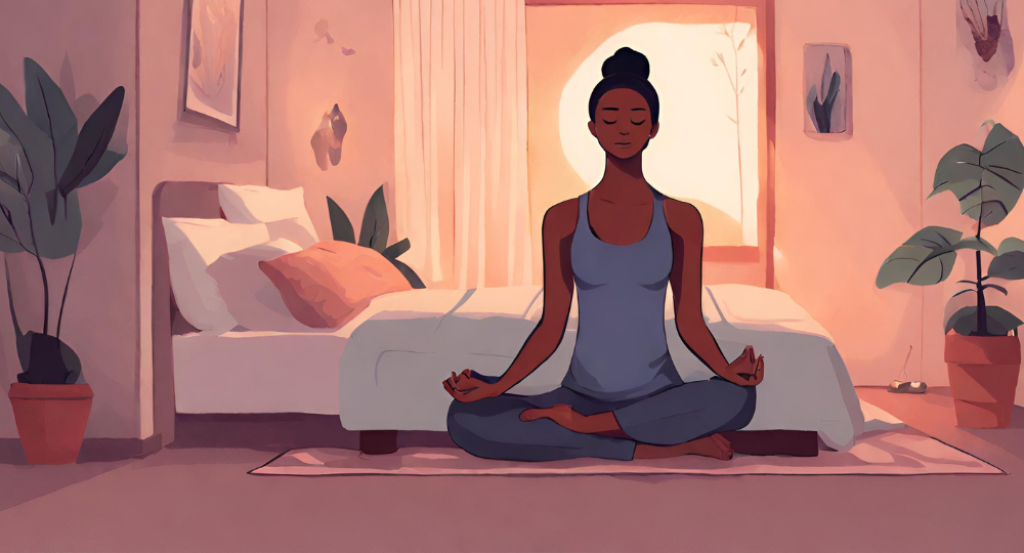
Bedtime yoga, a practice tailored for the evening, focuses on calming the mind and relaxing the body to foster better sleep.
Unlike vigorous yoga routines, it involves gentle, restorative poses and deep breathing techniques that prepare you for sleep.
This practice is not just about physical postures; it’s also a form of mindfulness that encourages you to let go of the day’s stress and enter a state of peacefulness.
Understanding the Importance of Bedtime Yoga
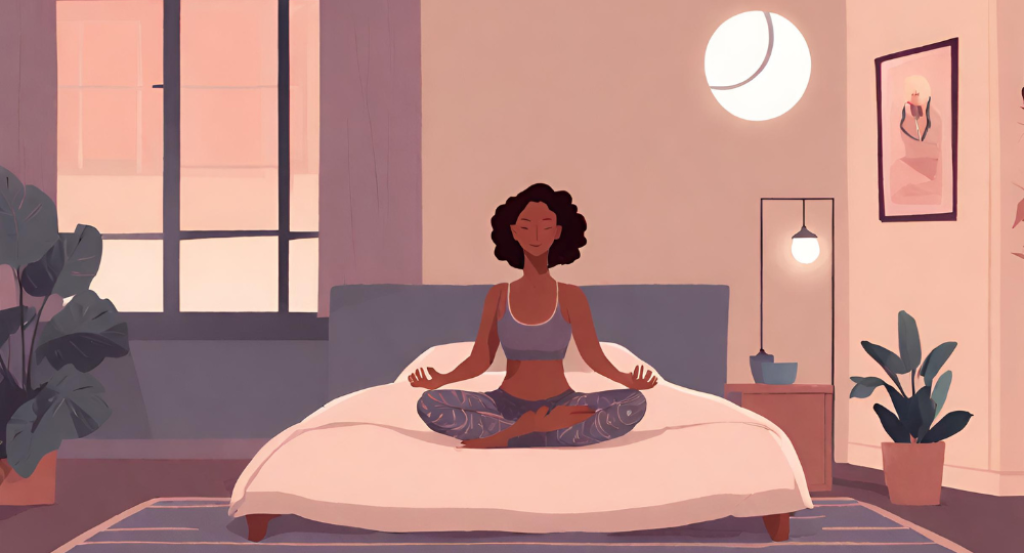
Incorporating yoga into your bedtime routine can significantly impact your sleep quality.
It helps in transitioning from the day’s activities to a restful night.
The slow, focused movements and breathing exercises of nights yoga activate the body’s relaxation response, counteracting stress and anxiety that often hinder sleep.
Benefits of Bedtime Yoga for Better Sleep

Practicing yoga before bed has multiple benefits for sleep quality.
It helps in achieving deep sleep.
Releasing physical tension
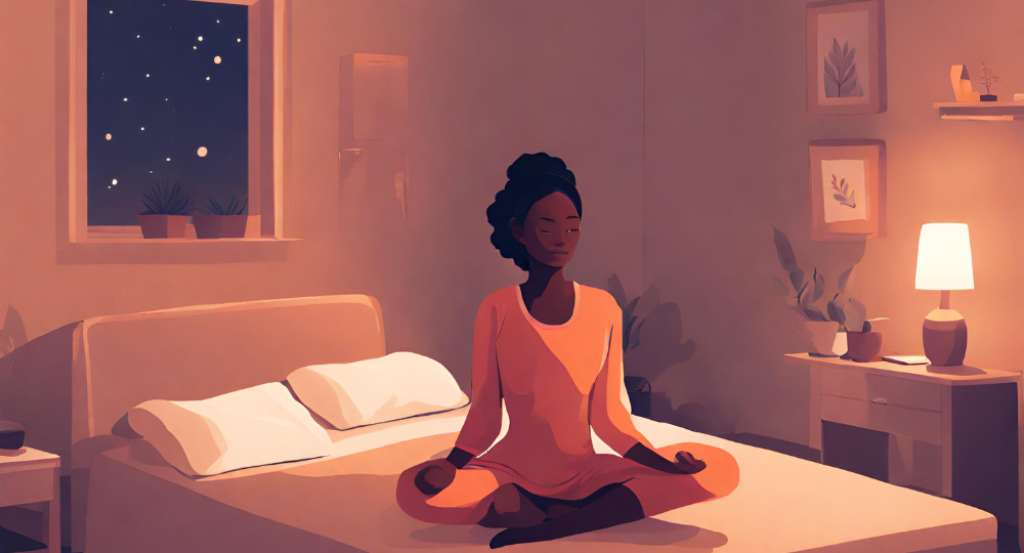
Releasing Physical Tension for Improved Sleep Through Bedtime Yoga
Embracing a nightly routine of bedtime yoga can significantly ameliorate the quality of sleep by releasing physical tension, a common impediment to restful slumber.
This practice involves gentle stretches that meticulously target and alleviate the stiffness and discomfort that accumulate over the day, particularly in stress-prone regions such as the neck, shoulders, and back.
By doing so, it not only eases the muscles into a state of relaxation but also prepares the body for a night of deep and uninterrupted sleep.
As the physical tension dissipates, the mind too begins to unwind, creating an ideal physiological environment for a restorative night’s rest.
Calming the mind
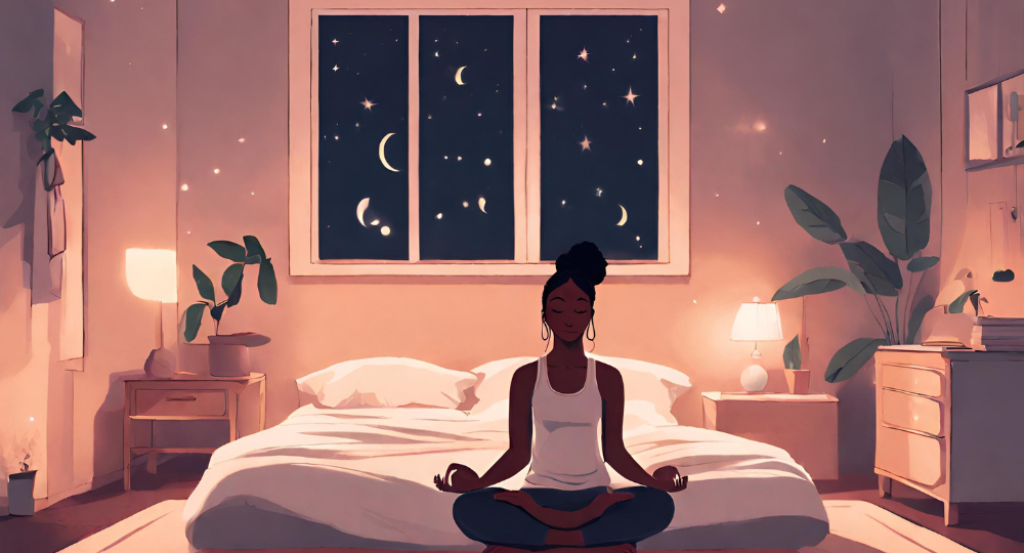
Bedtime yoga transcends mere physical relaxation, venturing into the realms of mental tranquility.
Central to this practice are the elements of focused breathing and mindfulness meditation — powerful tools that foster a serene mental state. By concentrating on breath control, individuals engage in a form of cognitive decluttering that quiets the incessant chatter of the mind.
This mental stillness not only facilitates the ease of transitioning into sleep but also deepens the sleep experience itself.
The synthesis of mindful breathing with meditative awareness during yoga serves as an effective conduit to a peaceful mindset, setting the stage for a restful night and empowering practitioners to detach from the day’s stressors and slip into a more profound and rejuvenating sleep.
Regulating the sleep-wake cycle
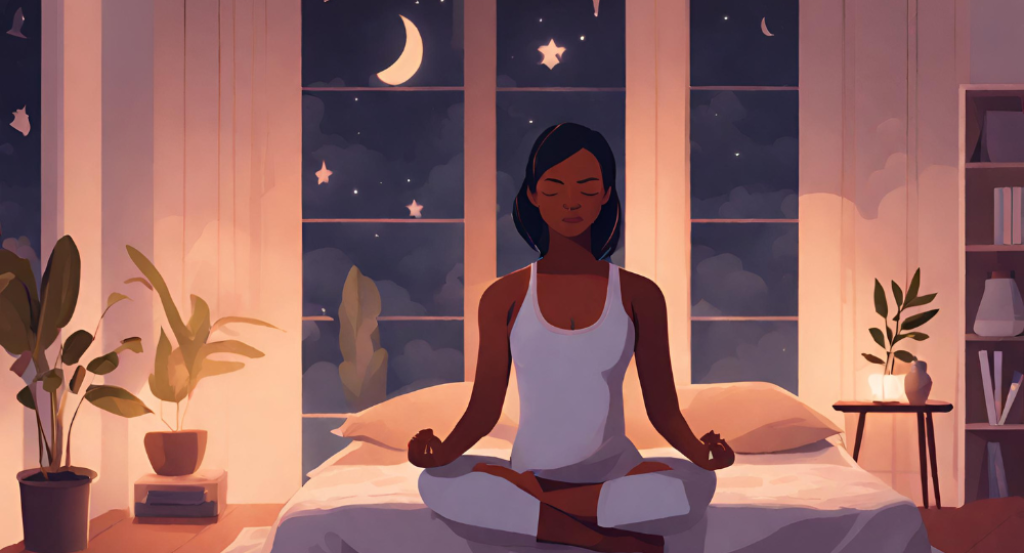
Incorporating bedtime yoga into one’s evening ritual plays a pivotal role in regulating the sleep-wake cycle, which is crucial for optimal health and well-being.
The consistency of a nightly yoga practice acts as a powerful cue to the body, indicating the need to transition from the day’s activities to night-time restfulness.
This ritualistic signal helps to synchronize the body’s internal clock, or circadian rhythm, reinforcing a stable and healthy sleep pattern.
By engaging in soothing yoga poses and breathing exercises, individuals can effectively prime their bodies for sleep, making it easier to fall asleep and stay asleep throughout the night.
Regularly dedicating time to such a calming activity not only nurtures a more structured sleep routine but also contributes to an overall sense of balance and rhythm in life.
Types of Yoga Poses Recommended for Bedtime
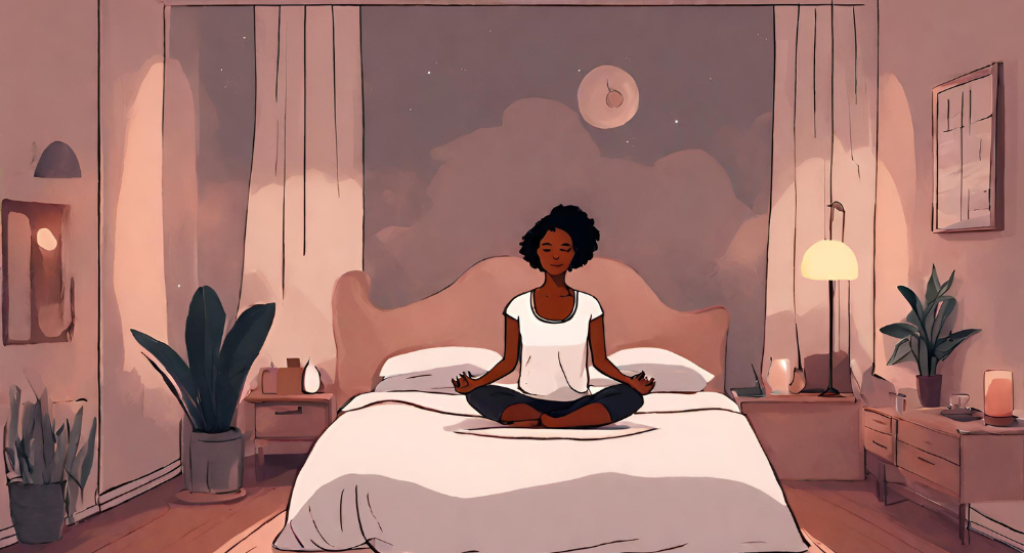
Certain yoga poses are particularly effective for promoting sleep.
These include:
- Restorative Poses: Such as Legs Up the Wall (Viparita Karani) and Child’s Pose (Balasana), which help release tension and calm the mind.
- Gentle Inversions and Forward Bends as poses to try for improving your sleep.: Like Standing Forward Bend (Uttanasana), these poses promote relaxation and help alleviate stress.
- Mindful Breathing Exercises: Deep, focused breathing techniques are integral to bedtime yoga, helping to reduce anxiety and prepare the body for sleep.
How Bedtime Yoga Can Help Manage Insomnia
For those suffering from insomnia, bedtime yoga can be a natural and effective remedy.
The practice aids in reducing stress hormones and promotes relaxation, making it easier to fall and stay asleep.
Regularly practicing yoga poses for sleep can gradually improve sleep patterns and overall sleep quality.
Best Yoga Poses for a Relaxing Bedtime Routine
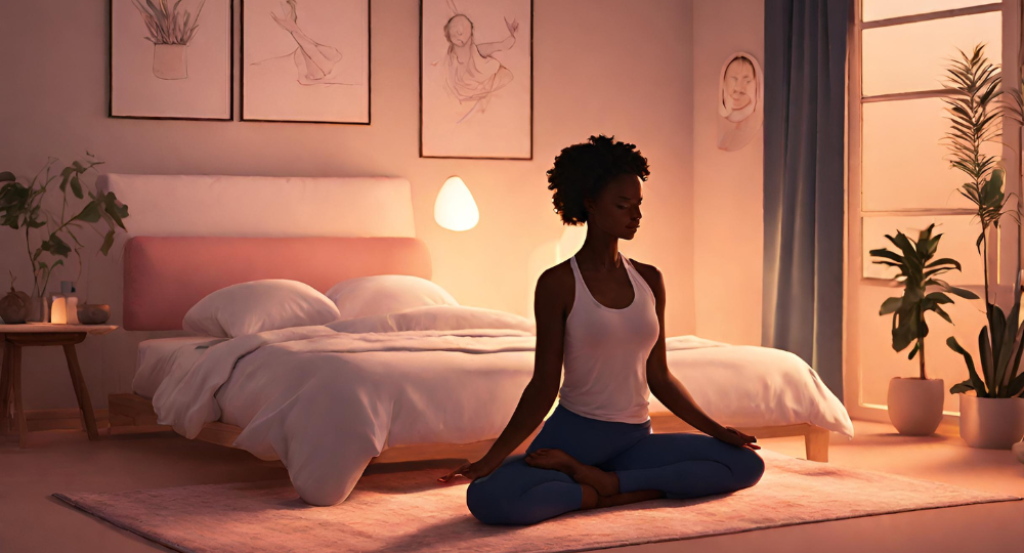
Creating a tranquil bedtime yoga routine involves incorporating poses that soothe the nervous system and prepare the body for sleep.
Here are some of the best yoga poses that you can include in your nightly routine for relaxation and better sleep:
Legs Up the Wall Pose (Viparita Karani)
This restorative pose is ideal for relieving tired legs and feet.
By lying on your back with your legs up against the wall, you allow gravity to aid in circulation.
This pose to help calm the mind is also known to help reduce symptoms of insomnia and improve your sleep quality.
Baddha Konasana (Bound Angle Pose)
Also known as the Butterfly Pose, Baddha Konasana is excellent for releasing tension in the hips and thighs.
Sitting with the soles of your feet together and knees bent outwards, you can gently fold forward for a deeper stretch, promoting relaxation throughout your body.
Balasana (Child’s Pose)
A foundational yoga pose, Balasana helps to stretch the back and neck gently.
As you use relaxing yoga and fold forward with your arms extended or by your sides, this pose fosters a sense of safety and comfort, making it perfect for winding down before bedtime and improving the quality of your sleep.
Standing Forward Bend (Uttanasana) for Better Sleep
Uttanasana, or Standing Forward Bend, is beneficial for calming the brain and relieving stress.
By bending forward and letting your head hang, you encourage blood flow to the head, which can have a calming effect and aid in sleep.
Savasana (Corpse Pose) for Ultimate Relaxation
Often practiced at the end of a yoga session, Savasana is crucial for relaxation.
Lying flat on your back with your palms facing upwards, this pose allows complete relaxation of every part of the body, making it a perfect conclusion to your bedtime yoga routine.
How to Practice Bedtime Yoga for Improved Sleep Quality
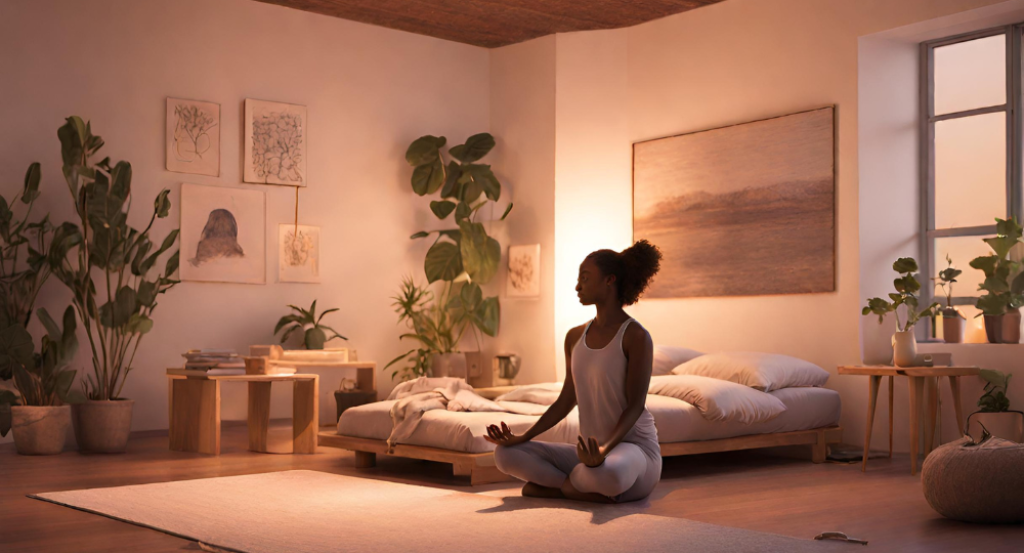
Adopting bedtime yoga as a regular practice can be a game-changer for your sleep quality.
Here are some tips and techniques to effectively incorporate bedtime yoga into your nightly routine:
Tips for Establishing a Bedtime Yoga Routine
- Create a Comfortable Space: Choose a quiet, comfortable spot for your yoga practice, preferably close to the wall, to improve the quality of your sleep.Ensure the lighting is soft and the environment is conducive to relaxation.
- Consistency is Key: Aim to practice yoga at the same time each night to help regulate your body’s sleep-wake cycle.
- Keep It Gentle: Focus on slow, gentle poses.Avoid stimulating poses that might energize you too much before bed.
- Duration for quality sleep: Even a short 10-15 minute session of yoga for sleep can be beneficial and improve the quality of your rest.Listen to your body and don’t overdo it.
Yoga Nidra for Deep Relaxation and Restful Sleep
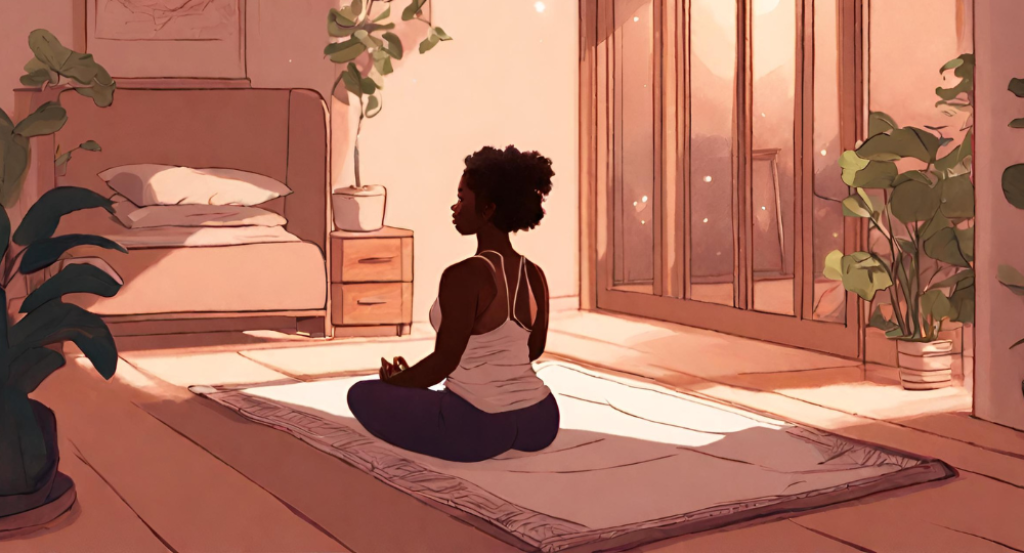
Yoga Nidra, also known as yogic sleep, is a guided meditation that can be practiced in Savasana.
Yoga for sleep is a powerful technique for deep relaxation and can significantly improve the quality of your sleep.
This practice involves a systematic relaxation of each part of the body, helping you drift into a state of conscious deep sleep.
Adding Mindfulness to Your Bedtime Yoga Practice
Integrating mindfulness into your yoga practice enhances its benefits.
Be present in each pose, focus on your breathing, and observe your thoughts and sensations without judgment.
This mindfulness aspect can help reduce bedtime anxiety and promote a more peaceful sleep.
Release Tension and Calm Your Mind with Restorative Yoga
Restorative yoga poses, which often involve props like pillows and blankets, are excellent for releasing physical and mental tension.
These poses are held for longer periods, allowing the body to fully relax and the mind to calm, setting the stage for a restful night’s sleep.
Conclusion : Enhancing the Quality of Sleep with Bedtime Yoga
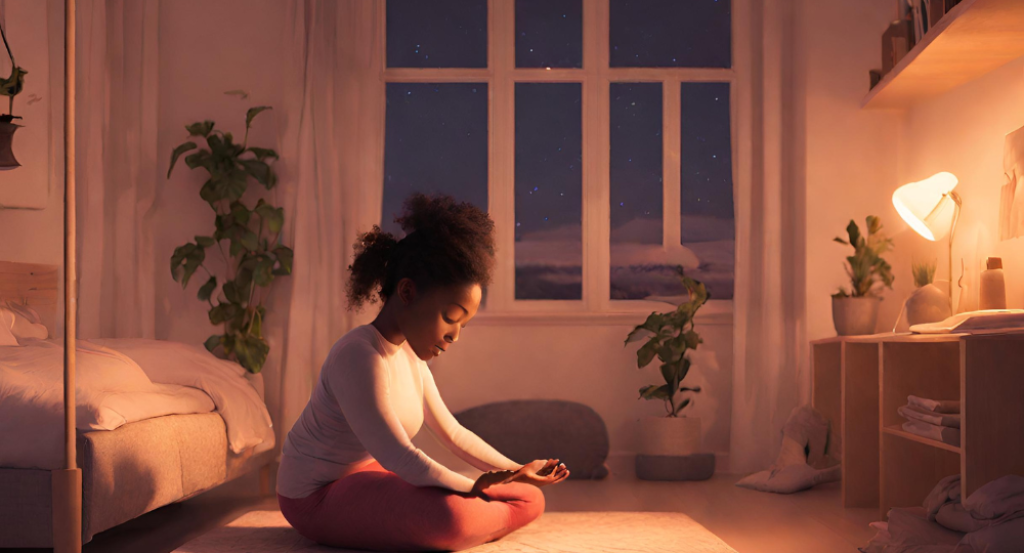
Incorporating bedtime yoga into your evening routine not only helps in unwinding but also enhances the overall quality of your sleep.
Here’s how you can optimize your bedtime yoga practice for a better night’s rest:
Optimize Your Sleep Environment
Your environment plays a crucial role in how well you sleep.
Create a serene and inviting atmosphere in your bedroom.
Consider dimming the lights, using essential oils with calming scents like lavender, and ensuring your room is a comfortable temperature.
A conducive environment enhances the effects of your bedtime yoga routine.
Incorporating Breathing Techniques
Breathing techniques, or pranayama, are an integral part of yoga that can be particularly beneficial before bedtime.
Practices like deep abdominal breathing or the 4-7-8 breathing technique can help slow down your mind, prepare your body for sleep, and support deep sleep.
The Role of Evening Yoga in Sleep and Overall Health
Evening yoga not only helps in improving sleep but also contributes to overall emotional and physical health.
Regular practice can lead to better stress management, improved mental clarity, and enhanced physical flexibility.
Calming Yoga Sequences for a Great Night’s Rest
Develop a sequence of poses that specifically target relaxation and sleep.
Start with gentle stretches, progress to restorative poses, and end with Savasana for ultimate relaxation.
Remember, the goal is to relax your body and calm your mind with relaxing yoga, not to engage in an intense workout.
This will help you sleep better.
The Importance of Post-Yoga Relaxation
After completing your relaxing yoga routine, allow some time to relax in Savasana or sit quietly, enjoying the peaceful state you’ve created that will enhance your ability to sleep better.
This transition time is essential for your body and mind to absorb the benefits of the practice and ease into sleep.






